A Closer Look at the new GAMP 5 Guidelines
In the dynamic realm of technology, adhering to industry standards and regulations is crucial to ensure compliance. The Good Automated Manufacturing Practice (GAMP) guidelines, a set of standards that ensure compliance in regulated spaces, have undergone a significant update after 14 years. This update, known as GAMP 5, responds to the challenges of advancing technology and provides a framework for innovation while maintaining regulatory adherence. This blog takes a look at some of the highlights and critical implications.

The Evolution from Computer Systems Validation (CSV) to Computer Systems Assurance (CSA)
The GAMP guidelines have undergone a substantial transformation during their shift from CSV to the newer approach of CSA. Instead of adhering to one-size-fits-all, document-heavy validation processes, GAMP 5 encourages critical thinking. It emphasises the need for appropriate, efficient, risk-based assurance tailored to the system's specific risk profile. This approach potentially reduces the documentation burden whilst maintaining the quality and extent of testing.
Embracing a Non-Linear Approach to Validation
GAMP 5 advocates for an Agile model whenever possible. This approach is iterative, incremental, and focuses on a risk-based strategy. It is beneficial for systems characterised by high complexity and novelty. By adopting an Agile methodology, companies can ensure compliance while remaining adaptable and responsive to change.
Addressing Digital Transformation
The rapid advancement of technology necessitates addressing new technologies and infrastructure. GAMP 5 incorporates advanced technologies like blockchain, cloud computing, and artificial intelligence/machine learning (AI/ML). This ensures that regulated industries can keep pace with the evolving technological landscape and harness the benefits of these innovations.
From Documents to Tools and Systems
A notable change in GAMP 5 is the departure from conventional paper-based documentation. Instead, the guidelines recommend maintaining information and records in Document Management Systems. This transition provides several advantages, including robust searchability and enhanced security against unauthorised access to data.
Possible Impacts on Your Compliance Journey
The introduction of GAMP 5 has far-reaching implications for organisations in regulated industries. Below are some key questions to consider. Are you :
- Implementing Risk-Based Validation and Critical Thinking? GAMP 5 encourages a lean documentation approach. Assess whether your organisation is embracing these principles to streamline compliance efforts.
- Using Third-Party Cloud Services? If you rely on infrastructure, platform, or software as a service from third-party providers, GAMP 5 can guide you on qualifying and maintaining these services effectively.
- Transitioning from Paper to Digital Systems? Evaluate whether your organisation is still dependent on paper documentation for validation or is making the shift towards more efficient and secure digital systems.
- Adopting Agile Software Development? If your organisation is already following or planning to adopt Agile software development and validation methodologies, GAMP 5 provides valuable insights for ensuring compliance within this framework.
In conclusion, GAMP 5 represents a significant step forward in compliance and validation adapting to the ever-changing technological landscape. It encourages innovation and efficiency while ensuring compliance remains a top priority. By aligning with these updated guidelines, organisations can navigate the complex world of regulatory compliance more effectively and position themselves for success in the digital age.
If you have questions or need guidance on your compliance journey, please get in touch with us at info@zifornd.com


